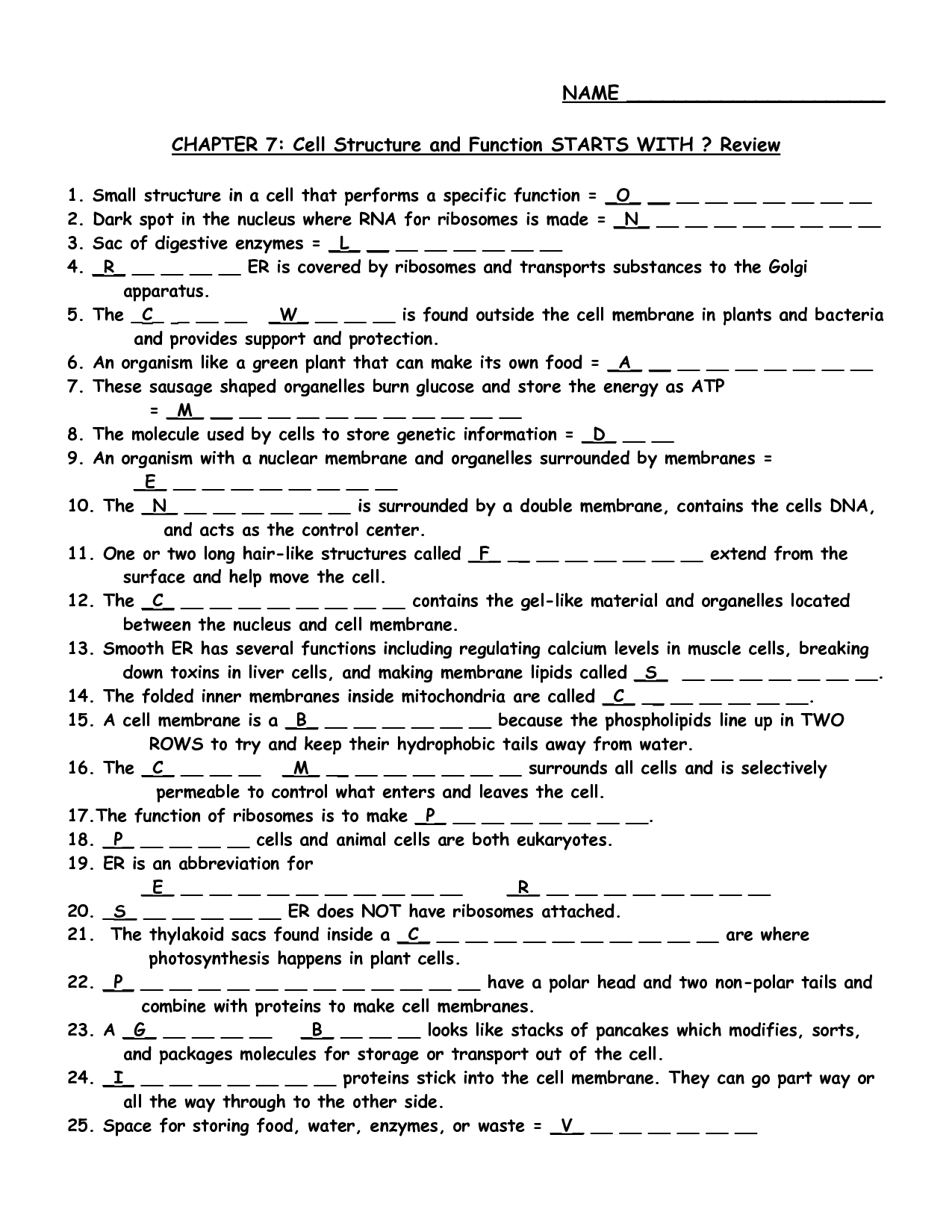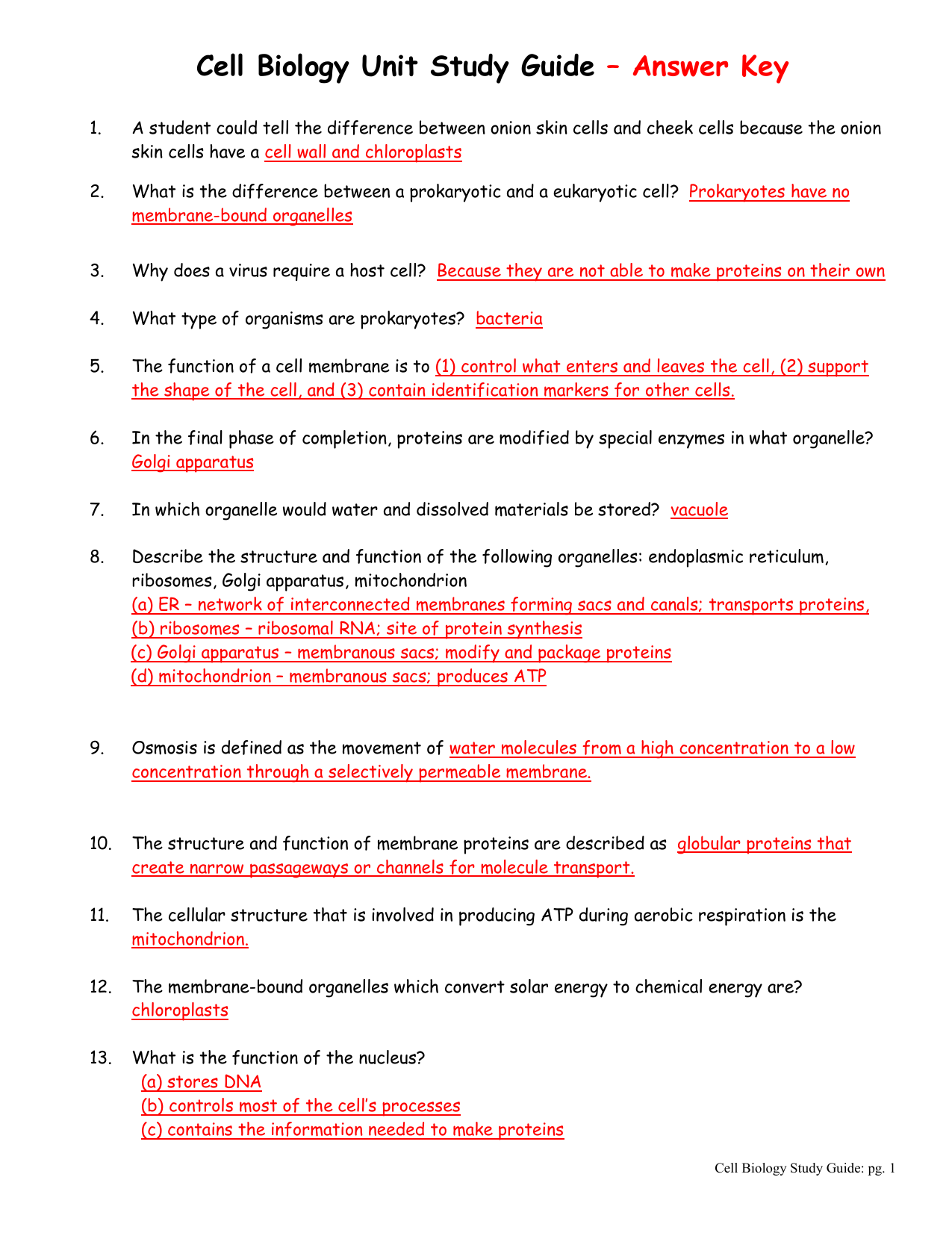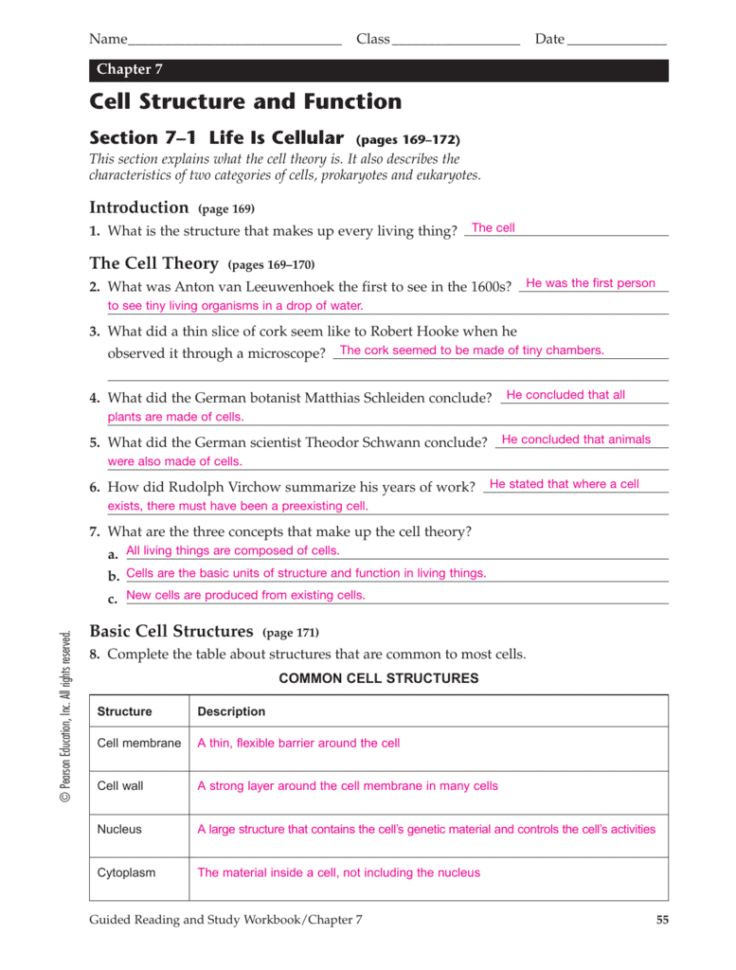Chapter 8 Lesson 2 Cell Structure Answer Key
Chapter 8 Lesson 2 Cell Structure Answer Key - Then try to answer your questions as you read. And that new cells are produced from existing cells. Web four macromolecules a cell membrane keeps substances such as macromolecules inside the cell. Cells work to maintain homeostasis. Complex network of proteins bonded (extensive network or lattice of protein fibers) function: Web lesson 2 the cell scan lesson 2 in your book. Maintains cell shape, regulation of cell activities, and assists movement (mobility) of cell. Comparison of plant and animal cells. (a) how many titanium atoms (blue) are in this unit cell? Specialized cells carry out particular functions, such as photosynthesis and.
Cells were discovered by robert hooke. Converts light energy into chemical energy (sugar) *can contain dna present in plant and cyanobacteria structure: He noticed partitioned boxes or compartments in the cork slice. In 1665, the english scientist robert hooke observed slices of cork (bark of tree) which is part of bark of a tree, under a simple magnifying device. Maintains cell shape, regulation of cell activities, and assists movement (mobility) of cell. And that new cells are produced from existing cells. The cell membrane also protects the cell by keeping harmful substances from entering. Compare cell parts by completing the chart. Nerve cell is the longest cell in hyman body. Click the card to flip 👆 nucleus, cytoplasm click the card to flip 👆 1 / 46 flashcards created by gabrielajosorio terms in this set (46) 2 major parts to most cells.
Web unit 2 cell structure and function. Web stack of membranes in the cell that modifies, sorts, and packages proteins from the endoplasmic reticulum. Web four macromolecules a cell membrane keeps substances such as macromolecules inside the cell. Think of three questions you have about cells. Name the longest cell in human body. Web lesson 2 the cell scan lesson 2 in your book. Nucleus, cytoplasm what does the nucleus do? Write those questions in your science journal. In 1665, the english scientist robert hooke observed slices of cork (bark of tree) which is part of bark of a tree, under a simple magnifying device. The mcqs on cell structure and function.
section 7 2 eukaryotic cell structure worksheet answers 28 images
The instrument used to see cells. Put a check mark in the plant or animal column to indicate which types of cells contain the cell. Converts light energy into chemical energy (sugar) *can contain dna present in plant and cyanobacteria structure: Think of three questions you have about cells. Web unit 2 cell structure and function.
Ch 13Lesson 4 Key
Web access lakhmir singh solutions for class 8 science chapter 8 cell structure and its functions very short answer type questions. Maintains cell shape, regulation of cell activities, and assists movement (mobility) of cell. All organisms are made of basic units known as cell. Web unit 2 cell structure and function. Eukaryotic cells can be divided into the nucleus and.
7 2 Cell Structure Worksheet Answer Key worksheet
Web stack of membranes in the cell that modifies, sorts, and packages proteins from the endoplasmic reticulum. The microscope was an instrument that was essential for the study of cells. Web lesson 2 the cell scan lesson 2 in your book. Eukaryotic cells can be divided into the nucleus and the cytoplasm. Specialized cells carry out particular functions, such as.
CLASS 8E SCIENCE
The mcqs on cell structure and function. Unit 6 gene expression and regulation. Put a check mark in the plant or animal column to indicate which types of cells contain the cell. The cytoplasm is the part of the cell. Converts light energy into chemical energy (sugar) *can contain dna present in plant and cyanobacteria structure:
Student Exploration Cell Structure Asnwer Key Cell Structure
Prokaryotic cell lipids and proteins what is the cell. Unit 6 gene expression and regulation. Control the center of the cell Think of three questions you have about cells. Specialized cells carry out particular functions, such as photosynthesis and.
Biology Study Guide Unit 7 Cell Division Answer Key Study Poster
Specialized structure that performs important cellular functions within a eukaryotic cell. The instrument used to see cells. Name the longest cell in human body. Web complete the graphic organizer. What is a cell ?
7 2 Cell Structure Worksheet Answer Key Biology —
Click the card to flip 👆 nucleus, cytoplasm click the card to flip 👆 1 / 46 flashcards created by gabrielajosorio terms in this set (46) 2 major parts to most cells. Web four macromolecules a cell membrane keeps substances such as macromolecules inside the cell. Eukaryotic cells can be divided into the nucleus and the cytoplasm. (a) how many.
Student Exploration Cell Structure Asnwer Key Copy of Cell Structure
All organisms are made of basic units known as cell. He noticed partitioned boxes or compartments in the cork slice. Comparison of plant and animal cells. Web lesson 2 the cell scan lesson 2 in your book. And that new cells are produced from existing cells.
7 2 Cell Structure Worksheet Answer Key worksheet
Web two views, a top, and side view, for the unit cell for rutile (tio 2 _2 2 ) are shown here. Eukaryotic cells can be divided into the nucleus and the cytoplasm. Compare cell parts by completing the chart. Unit 6 gene expression and regulation. The following are the key topics that are covered in chapter 8 of class.
7th Grade Chapter 2 Cell Structure and Function
Cell structure and function lesson summary cell organization key question what is the role of the cell nucleus? Cell structure and function, parts of the cell. Organisms show variety in cell numbers shape, size. (a) how many titanium atoms (blue) are in this unit cell? Fundamental concept of biology that states that all living things are composed of cells;
Chapter 8 Cell Structure Lesson 2 Reading Tool Connect To Visuals As You Read, Use The Figures And Diagrams To Help You Identify And Describe Each Part Of The Cell…
Think of three questions you have about cells. Organisms show variety in cell numbers shape, size. And that new cells are produced from existing cells. Put a check mark in the plant or animal column to indicate which types of cells contain the cell.
The Instrument Used To See Cells.
The microscope was an instrument that was essential for the study of cells. The cell membrane also protects the cell by keeping harmful substances from entering. Web fluid portion of the cell outside the nucleus. Nucleus, cytoplasm what does the nucleus do?
Web Stack Of Membranes In The Cell That Modifies, Sorts, And Packages Proteins From The Endoplasmic Reticulum.
Maintains cell shape, regulation of cell activities, and assists movement (mobility) of cell. Comparison of plant and animal cells. Fundamental concept of biology that states that all living things are composed of cells; Write those questions in your science journal.
Web Terms In This Set (32) Cell.
Cell structure and function, parts of the cell. Web four macromolecules a cell membrane keeps substances such as macromolecules inside the cell. Prokaryotic cell lipids and proteins what is the cell. In 1665, the english scientist robert hooke observed slices of cork (bark of tree) which is part of bark of a tree, under a simple magnifying device.







